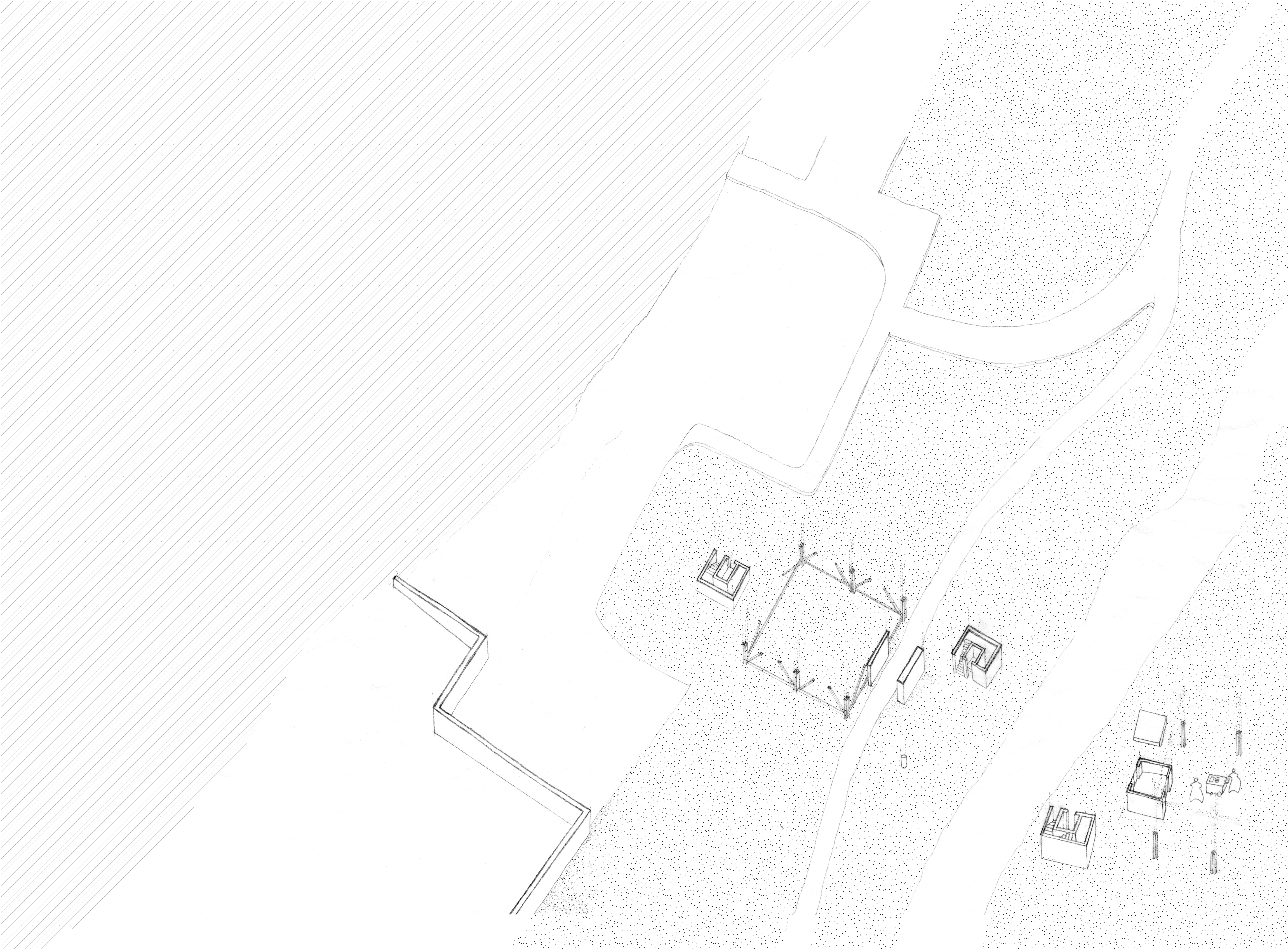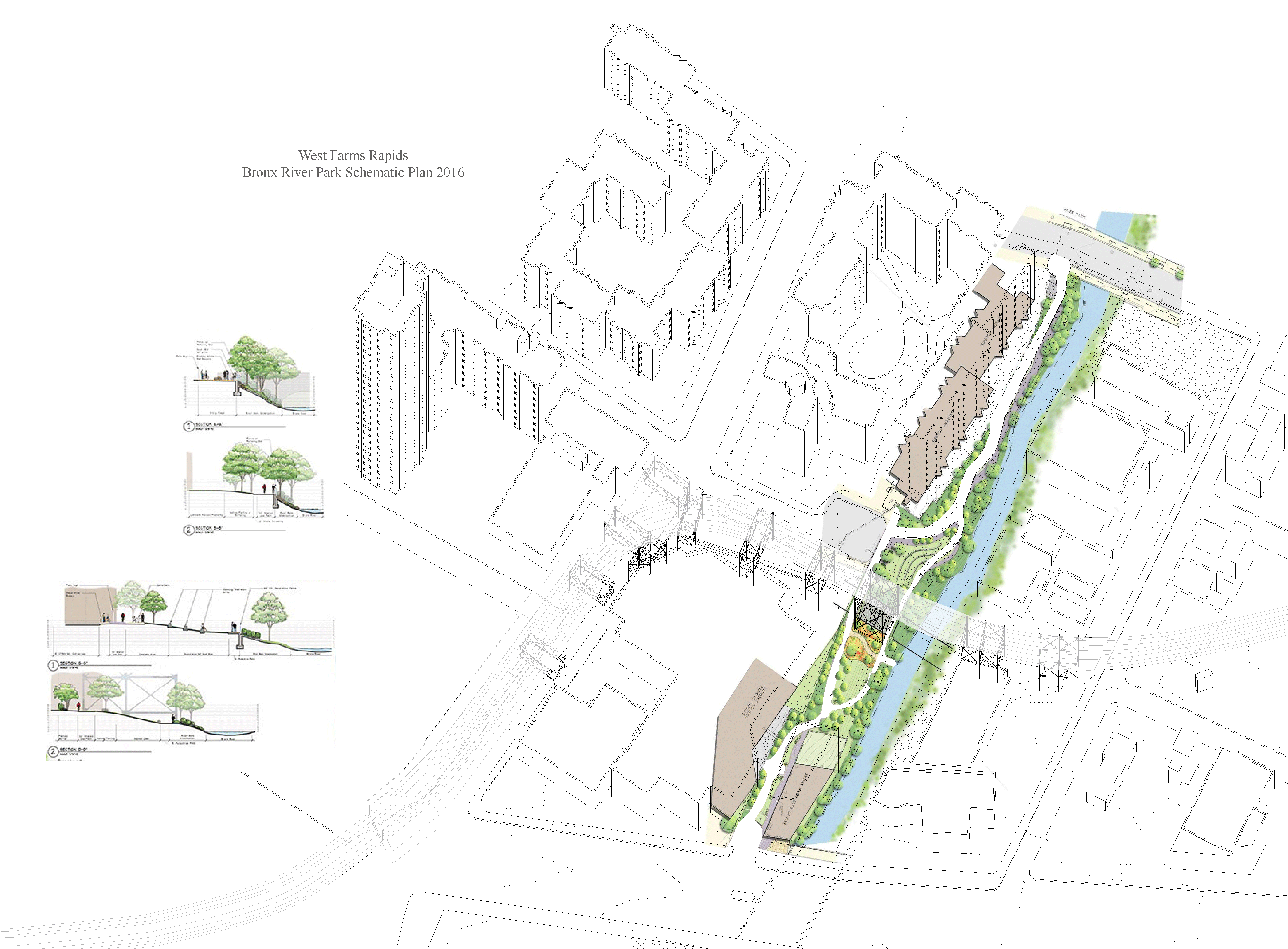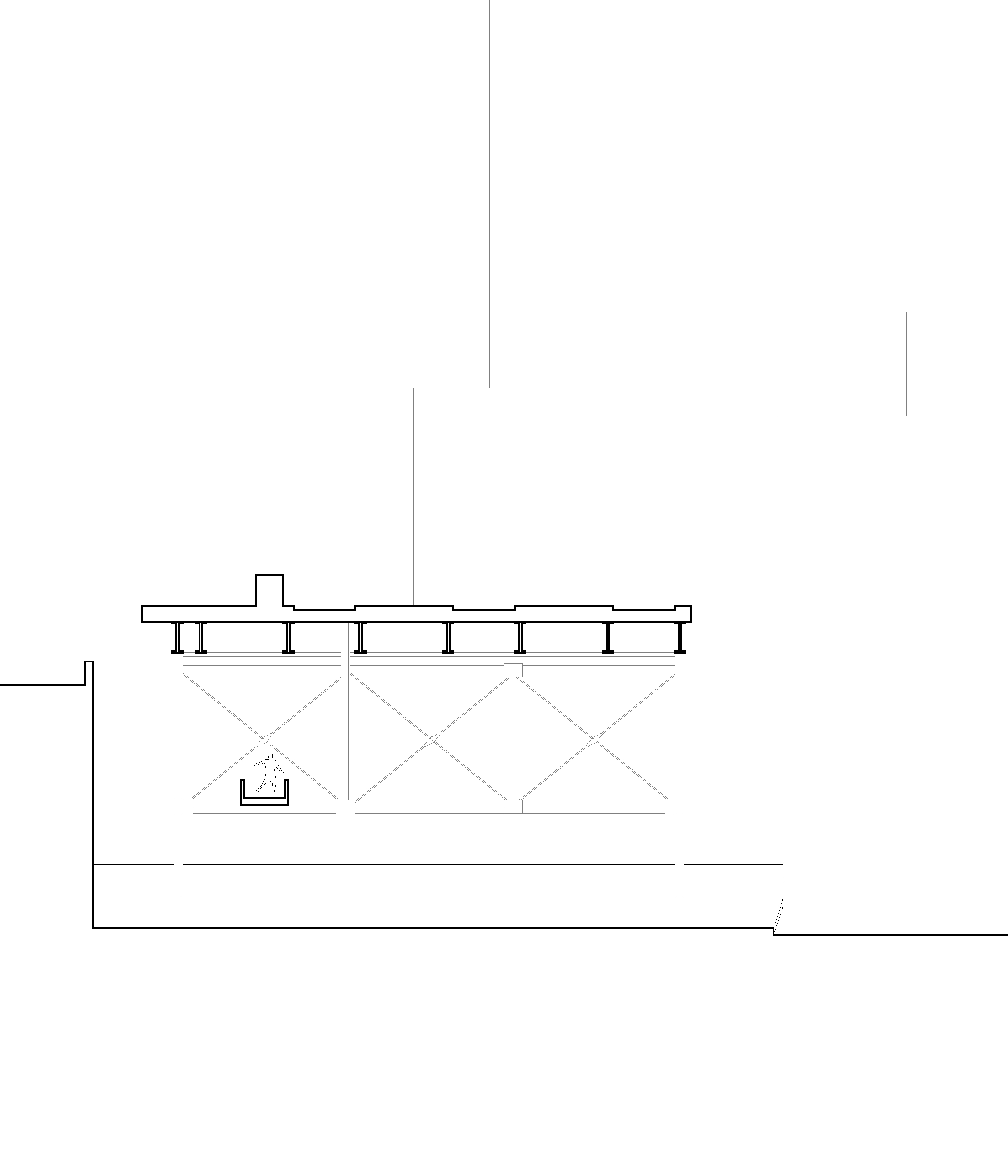interstitial kitchen
west farms the bronx new york
the interstitial kitchen proposes a series of cooperatively owned and operated community kitchens built in vacant space under new york's elevated rail. the construction of freeways and elevated subway lines has historically divided communities and segregated neighborhoods. the interstitial kitchen will stitch across this unoccupied space under the elevated rail to service the spatial and material needs of street food vendors and their local communities.
the labor of cooking has historically been hidden in back-of-house service space. sociologist Sarah Bowen states "in the past [not all] Americans were cooking their food. They were often relying on low-income women of color to cook a lot of it, and they still are. It's just that it used to be in the house, and now it's in restaurants." a typical restaurant separates cook from consumer, invisibilizing food production processes. the guerrilla kitchen -here defined as mobile food carts, stands, or trucks- are an informal economy that contest this divide, catalyzing interaction between cook and consumer in the exchange of food on the street.
Bowen, Sarah, Joslyn Brenton and Sinikka Elliott. Pressure Cooker: why home cooking won’t solve our problems and what we can do about it. Oxford University Press, 2019.
Urban Justice Center 2019
1
2




the existing structural supports of the elevated rail determine location of the building cores, which contain freight elevators, smaller food lifts, and stairs. the second floor is outfitted with industrial kitchen equipment accommodating 24 kitchens in total, available for singular or shared use. the building plan follows the planimetric layouts of incubator kitchen La Cocina in san francisco, Hot Bread Kitchen in new york, and the Deppaneur in toronto, providing adequate space and flexible use. the third floor is occupied by a hydroponic farm that services local community and street vendor needs.



street vendors are a precarious workforce, dispersed and non-unionized. for many, storing carts at home would be most convenient but city-wide food safety regulations prohibit this, and law enforcement looks for excuses to fine violators. certified commissary locations provide overnight parking [several new york locations in brooklyn, queens, harlem, and the bronx are mapped below]. as a garage/kitchen typology, vendors pay rent to park and wash their vehicles or use shared commissary kitchens.
commissaries are private-owned, charging high rates for storage and access, and presenting an insurmountable barrier for many vendors, who instead use folding tables, the back of pickup trucks or vans, tarps, and other makeshift stands.
according to a 2019 report by the Urban Justice center, a survey of street vendors showed that "77% live in queens, brooklyn, or the bronx. the majority also vend in the outer boroughs." these outer boroughs are also the most food insecure, according to a 2017 study estimating just over 1 million food insecure new yorkers. [map below]
the highest concentration of SNAP participants, formerly known as the food stamps program, maps on to roughly the same neighborhoods. an estimated 1.5 million new yorkers relied on SNAP as of may 2019. [map below]



the current condition under the elevated rail of the metro north tracks in east harlem:
[above, top to bottom]
east 134th st. encampments of folks experiencing homelessness
east 128th st. private-owned parking lots
east 116th st. urban garden center
open 900a to 700p
east 115th st. la marqueta
east 104th st. solid masonry wall
proximity to highly trafficked subway stops is a strategic move for street vendors to sell their wares, but heightens the risk of harassment by the police since these stations are over-patrolled and over-policed. this problem gained more widespread coverage in october of last year, when a woman was violently arrested and detained for selling churros in the station. rather than police the populations most dependent on these services, public transit spaces must work for these individuals.
taking cues from the presence of existing street vendors in these neighborhoods, the interstitial kitchen will serve an existing need by providing a community kitchen through city funding, with a sweat equity program and cooperative ownership model. the four sites identified here are neighborhoods of relative food insecurity where street vendors operate regularly and require support structures:
[clockwise from top right]
the robert kennedy bridge, astoria
gowanus expressway, sunset park brooklyn
metro north tracks, east harlem
west farms station, the bronx



the site at west farms in the bronx [above] is under the 2 and 5 subway lines, next to two big box food retailers, and two fast food chains. fast food chains are typically signifiers of "food apartheid", a term coined by bronx-based farmer Karen Washington to more accurately define what is commonly referred to as a "food desert", where the needs of local residents are served largely by stopgap solutions like corner stores, street vendors, fast food, due to a lack of sufficient grocery store options. the interstitial kitchen seeks to fill this existing need.

